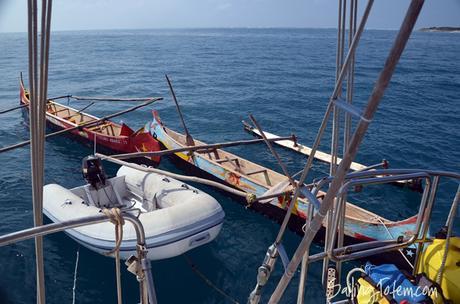
South of Madagascar’s Cap St Andre is a sprinkling of islands, around 15 nautical miles off the coast. They’re aptly called the Barren Islands: some are no more than long spits of sand, just a couple of meters above sea level, and most have no more than thin sandy soil.
I sat down today with the intention of sharing a lookback post on things that went well (and things that didn’t) for our passage to Madagascar as a follow up to the passage report, but while culling photos and reflecting, I kept coming back to these striking islands and the people we met there. Yes, people. Because although these small, flat islands grow little more than scrub and some grass- if they grow anything at all- for much of the year they are home to semi-nomadic families from Madagascar’s Vezo tribe.
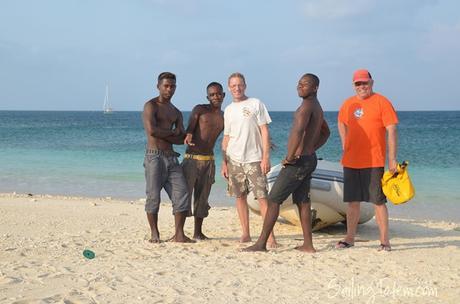
Our visit was at the latter end of their seasonal migration; in November, when the risk of cyclones begins to increase, they depart for the mainland. But during the dry monsoon, they sail their pirogues to these outlying islands, build seasonal camps, and live from what they bring and what they glean while drying fish to transport to market.
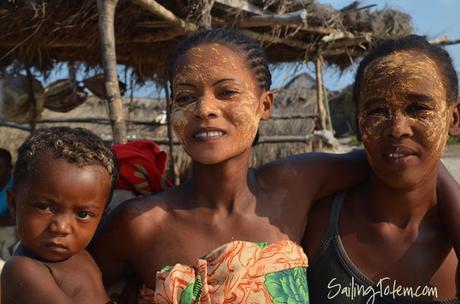
The basis of Vezo culture is tied to the ocean: ply the water in dugout outrigger canoes, hand carved and carefully decorated. It’s hard not to compare them to the big metal trawlers we saw running lines just a hundred miles north, and wonder how the Vezo and their beautiful boats can compete with big commercial fishing operations. In fact, they can’t- their fishing grounds are threatened by industrial shrimp fishing and illegal fishing with SCUBA.
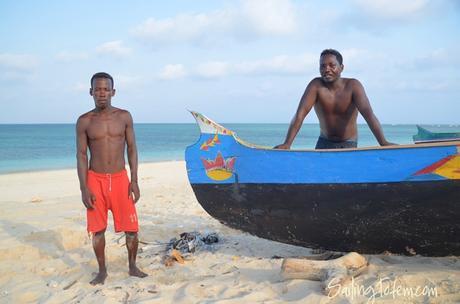
It turns out there’s another big risk to the Vezo besides the trawlers we saw, although that’s very real too. Blue Ventures is an NGO working to safeguard both the people and their fishery with holistic plans that include health care, marine management, and more; from them we learned about commercial mining. Guano extraction destroys the fragile ecosystem of these islands, where turtles and seabirds nest. Runoff damages the surrounding coral reefs. And now, a number of these islands are targeted for mining by a politically powerful, well-funded Malagasy group. Blue Ventures has been working since 2010 to create largest Locally Managed Marine Area (LMMA) of the western Indian Ocean. The LMMA makes sense for more than just the Vezo. Reef assessments have shown that the Barrens have SIGNIFICANTLY more fish biomass and coral cover than any other marine reserve in Madagascar. It holds five species of marine turtle, eight species of critically endangered sharks and seabirds- 51 threatened species in all. Across Indian Ocean reefs, only Chagos exceeds the biodiversity and density of the Barrens. To those who know anything about Chagos, this speaks volumes. But these islands are very much at risk, and Blue Ventures is working hard to bring positive change. (Their factsheet on the Barrens is available at this link)
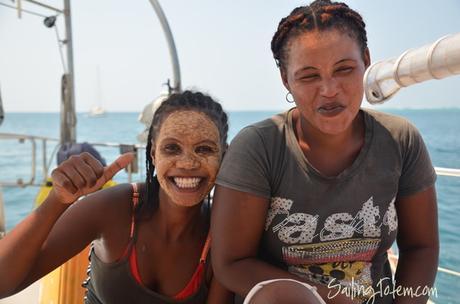
We spent a number of days anchored off Nosy Lava (the third Nosy Lava we’ve encountered in western Madagascar!), the site of several Vezo fishing camps. In places like this, it’s good practice to go ashore and seek an elder/leader to ask permission to anchor, showing up in their backyard as we do. But before we could get the dinghy into the water to make our way in, a pirogue approached. Would we like to trade for lobster? We invited them to sit in the shade of the cockpit and passed around glasses of water. Did we have anything to trade? Communication is rough, but passable, accomplished with a mix of sign language, our feeble French (theirs wasn’t much better), and a great phrase book with French, English, and Malagasy gifted by friends up in Nosy Be.
Trading for lobster sounded great: succulent tails drizzled in garlic butter and seared on Solstice’s barbecue later made a memorable dinner shared with friends. But although trading is a mutually beneficial and enjoyable aspect of our life, this time around, we weren’t actually all that interested in trading. As we learned about the subsistence lifestyle led by the Vezo on our approach, it seemed like the perfect place to give without seeking an exchange.
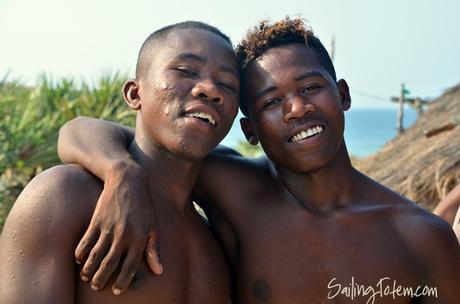

Do I look a little stressed? Absent a leader, there was some chaos when we brought our first bag to shore for gifting.
We did finally figure it out on the second day when someone mentioned the president. He arranged for us to bring our donations to a covered meeting space. It started off more organized, but actually turned into kind of a grab-fest very much like the prior day.
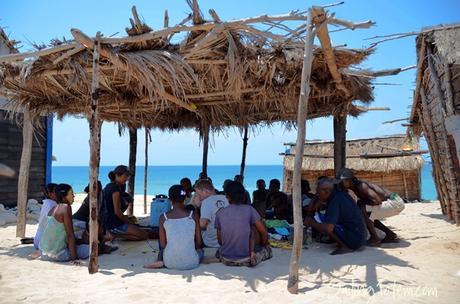

Also appreciated was fresh water. There’s a well, but it’s not good drinking water. We ran our watermaker daily to fill jerry cans, ferrying ours to shore to decant to others and topping up any that were brought out to Totem.
Other than the initial meeting and query about trading for lobster, we didn’t attempt any trade. But one afternoon, someone noticed that I liked the model outrigger canoes. And one after another, little outrigger models started showing up on Totem. A couple of them were even completed in our cockpit, colored in with the oil pastels we were giving them for kids!
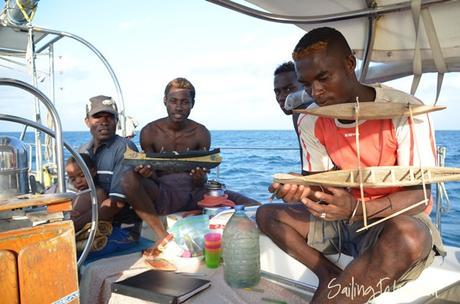
The Barren Islands made for an unforgettable stop, with people who were fun and interesting and enjoyable to spend some time with. We spent hours every days with visitors on the boat trying to talk (with varying degrees of success). I wish we could have stayed longer, but we were watching for weather conditions to sail from Madagascar to South Africa – and when the weather said ‘go’, we went!
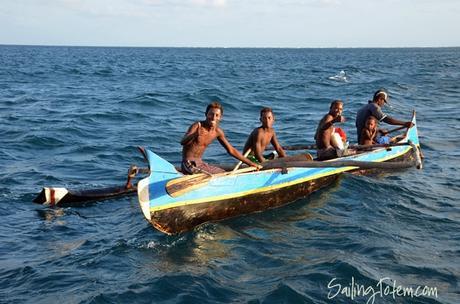
If we could do it again, we’d go with more time (yes, I say this often, but I really do mean it!). The reefs begged exploration. I’d have fulfilled my dream to go sailing in a pirogue. But hopefully, someday we’ll be back, and see how the Vezo are doing.
Please consider supporting Blue Ventures. “As a field-based conservation organisation and a British registered charity (number 1098893), 92% of our spending is channelled directly to supporting our conservation programmes in the tropical developing world. We steer clear of smart offices, and reject the excesses of many large conservation organisations. We keep administration costs to a minimum, with staff living and working alongside local community members wherever possible.”
This post is syndicated on Sailfeed.

